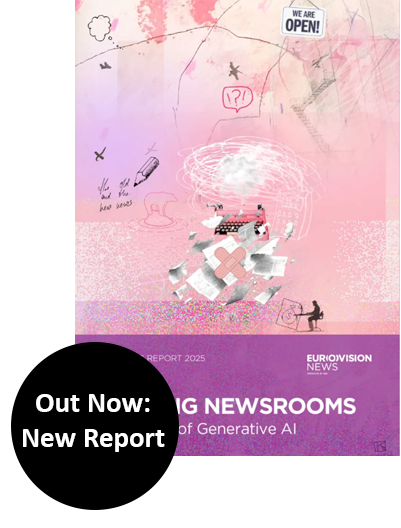The rift between big metropolitan areas and the countryside has grown. Now the urban class is pitted against everything from deep suburbia to the last provincial backwater — and journalism has something to do with it.
The political divide used to be between the haves and the have-barely-enoughs. For more than a century, social class was the best predictor of voting behaviour. Of course, there have been other indicators which social scientists have successfully used to determine political alignments: religion, gender and age, ethnic origin or level of formal education. However, the phenomenon of right-wing populism isn’t easily explained along these lines.
Today’s populists come from the poor and rich in equal measure. Which is why parties like the German AFD attract disgruntled university professors and social security recipients alike. And even though the narrative of the alienated white working-class male was stretched to exhaustion when explaining Donald Trump or Brexit, the numbers revealed a different picture. Trump was supported by workers and millionaires just as much as Brexit was.
The big divide these days is of another nature, and it has only a little to do with pocket books. Heat maps about political preferences reveal a rift between the big metropolitan areas and the countryside. The urban class is pitted against everything from deep suburbia to the last provincial backwater, and journalism has something to do with it.
Of course, this city-country dichotomy is no new development. Big urban areas have always attracted those who were willing to put up with diversity and risk for educational or economic gain. They tended to be more tolerant of those who were different and voted more often for parties with progressive agendas. But developments in the media have amplified the divide.
When newsrooms were doing some soul searching in the aftermath of the Trump election, the Brexit vote and other populist-flavored surprise outcomes, they often realized that they had missed out on important developments in their own countries: a growing dissatisfaction among populations they hadn’t made an effort to understand.
Yes, reporters were sent to small towns and provinces to depict “the typical Trump voter”, for example. But the research trips were very often conducted like visits to the zoo. And the stories that came out of them catered to the expectations of the educated, urban readership because the journalists who wrote them were typically of the urban class. They were either raised and educated in the metropolitan areas to begin with, or had fled rural environments in disgust.
“Our journalists don’t understand the countryside” — said more than one editor when discussing the talent pipeline in the profession. The lack of journalists with rural backgrounds is more of a concern to many of them than the lack of gender or ethnic diversity among their staff. And these editors know the major reason for this: the decline of local and regional newspapers.
“These papers used to be training grounds for young journalists”, said one editor of a Swedish news organization. Talent from the rural areas would eventually seep into the national news outlets, and help set agendas. With many of the small newspapers closing down, this stream has dried out.
These days young people from urban middle class households are the most likely ones to make it into the newsrooms of first rate publications. Consequently, they shape the media’s view of the world. And this view informs political debates.
The diminishing trust in media now reveals that the picture they are presenting is incomplete, and some newsrooms have drawn conclusions from this. For example, the Swedish public broadcaster SVT – after less than satisfactory election coverage – made a point of sending plenty of reporters to the countryside during the next campaign and found it did a much better job capturing the public sentiment.
To be sure, better journalism doesn’t necessarily prevent populism and the rise of autocratic leaders. But quality journalism is an essential ingredient of democracy. Its mission is to inform public debates and portray the world – all of the world, not just parts of it. Diversity in newsrooms is a pre-condition for it.
This commentary was published in News Mavens on 1st February 2019




 Image (cropped) by katy-at-katyblackwood.co.uk, (CC BY-SA 4.0).
Image (cropped) by katy-at-katyblackwood.co.uk, (CC BY-SA 4.0).
OXFORD – The brutal torture and murder of the US-based Saudi journalist Jamal Khashoggi has focused attention on Saudi Crown Prince Mohammed bin Salman, who is widely believed to have ordered the killing. It also highlights the hazards of the news business. When the final numbers are tallied, 2018 could be the most dangerous year on record for journalists worldwide.
But while physical attacks on journalists have become frighteningly bold – and Khashoggi’s killing may be the most audacious yet – most dangers confronting the profession are much more mundane. Five stand out.
First, the number of job opportunities is dwindling, and positions are characterized by low pay, perpetual job insecurity, and limited opportunities for advancement. In the United States, for example, newsroom employment has dropped nearly one-quarter in less than ten years, while enrollment in top journalism schools has tapered off more recently.
Second, “Big Tech” is outcompeting news organizations in the race to attract limited talent. Journalism needs people skilled in technology to lead investigative reporting projects and to manage the industry’s digital transition. But at the moment, most computer engineers see a brighter future with platform companies like Facebook and Google, which can offer higher pay, more job security, and better work-life balance than even the biggest media outlets.
Third, journalism is a lot less glamorous than it once was. Years ago, weather-beaten foreign correspondents on television or the front pages of major newspapers lured young reporters to the craft. And, although most of us who took the bait never ventured farther than city hall, we were nonetheless driven by the noble mission of holding the powerful to account. But in today’s distributed social-media environment, foreign correspondents are rare, and media “influencers” are more likely to be pop stars than policy wonks.
Fourth, even as pay and prestige diminish, newsroom pressures are intensifying. When a “cub” reporter joins a media organization today, the ability to write great copy is no longer sufficient; young journalists must also possess audio and video skills, data journalism capabilities, and social-media savvy. These skills might lead to better news products, but nobody is good at everything. To demand that they are and place endless demands on them might encourage reporters to leave the profession.
Finally, the relentless rhetorical attacks on members of the mainstream media by leaders like US President Donald Trump – whose “fake news” narrative targets the credibility of the profession itself – is having an effect. Although confidence in the news media has been rising in recent surveys, the constant vilification of journalists’ integrity and intelligence threatens to erode the profession.
Together, these five challenges are taking a heavy toll on the news business, and this poses a risk to democracy itself. Without free and independent media, citizens cannot make informed decisions. In fact, when professional journalism is absent, people can easily become lost in a maze of often-unreliable information, or even fall prey to self-proclaimed, interest-driven experts and propaganda. Journalism is democracy’s compass; we must find a way to recalibrate it.
First and foremost, journalists need protection. That means ensuring not only their safety, but also their ability to access information and report their findings without fear of reprisal. At a minimum, attacks on journalists like Khashoggi must be fully investigated, and their perpetrators must be held to account and condemned by the international community.
And yet, support for the media must go beyond punishing those with the audacity to kill a reporter. For example, more programs are needed to help nurture young talent. Governments could offer subsidies, give tax breaks, and sponsor initiatives that offer training in journalism and new media. Future journalists need role models, but they also need the technical skills to become role models themselves.
Perhaps most important, media advocates everywhere must work to increase the public’s media literacy. News consumers must understand how journalism works, how journalists do their jobs, and why professional media outlets are essential components of a well-functioning democracy. Until the public values the output that professional journalists produce, a shortage of talent will be the next big challenge for journalism. It could turn out to be its biggest yet.
This column was published by Project Syndicate on November 27, 2018